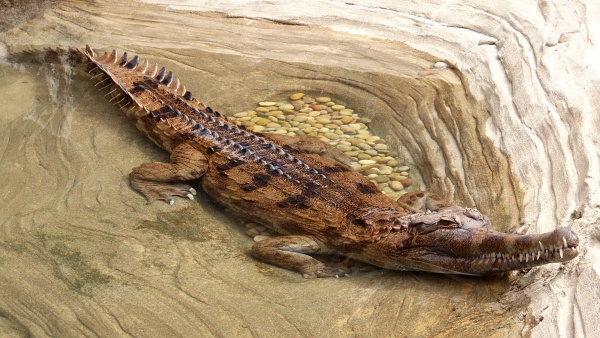Facts About False gharial
The false gharial, also known as the Malayan gharial or Sunda gharial, is a freshwater crocodilian native to Peninsular Malaysia, Borneo, Sumatra, and Java. This fascinating species is currently listed as Vulnerable on the IUCN Red List, with an estimated global population of between 2,500 and 10,000 mature individuals. Its scientific name, Tomistoma schlegelii, honors the German herpetologist Hermann Schlegel.
In terms of classification, false gharials possess a snout that broadens at the base, giving them a closer resemblance to true crocodiles than to their gharial relatives. Molecular studies indicate that they are the closest relatives to the gharials and are increasingly being classified within the Gavialidae family.
False gharials are distinguished by their dark reddish-brown coloration, adorned with spots and cross-bands, and their long, slender snouts equipped with needle-like teeth. These impressive creatures can grow up to 5 meters in length, particularly the males, making them one of the largest crocodilians with the most slender snouts.
You can find false gharials in Peninsular Malaysia, Sarawak, and Indonesia, where they primarily inhabit peat swamps and lowland swamp forests. However, their existence is threatened by habitat destruction, hunting for their skin and meat, and the harvesting of their eggs for consumption.
From a conservation perspective, false gharials are listed on CITES Appendix I, indicating they receive the highest level of protection against international trade. Efforts by the Malaysian and Indonesian governments aim to prevent their extinction, and some populations are showing signs of recovery. Nonetheless, challenges such as continuous habitat destruction and human-wildlife conflicts persist.
Regarding reproduction, false gharials engage in mound-nesting, with females laying small clutches of eggs. After about 90 days, the young hatch but receive no parental care. There have been instances of human-false gharial conflicts, including several verified fatal attacks on humans.
Fossil records indicate that extinct species related to the false gharial have been discovered in various locations. Despite concerted conservation efforts, the false gharial continues to face significant threats and challenges, making its survival in the wild an ongoing concern.

 Papua New Guinea
Papua New Guinea